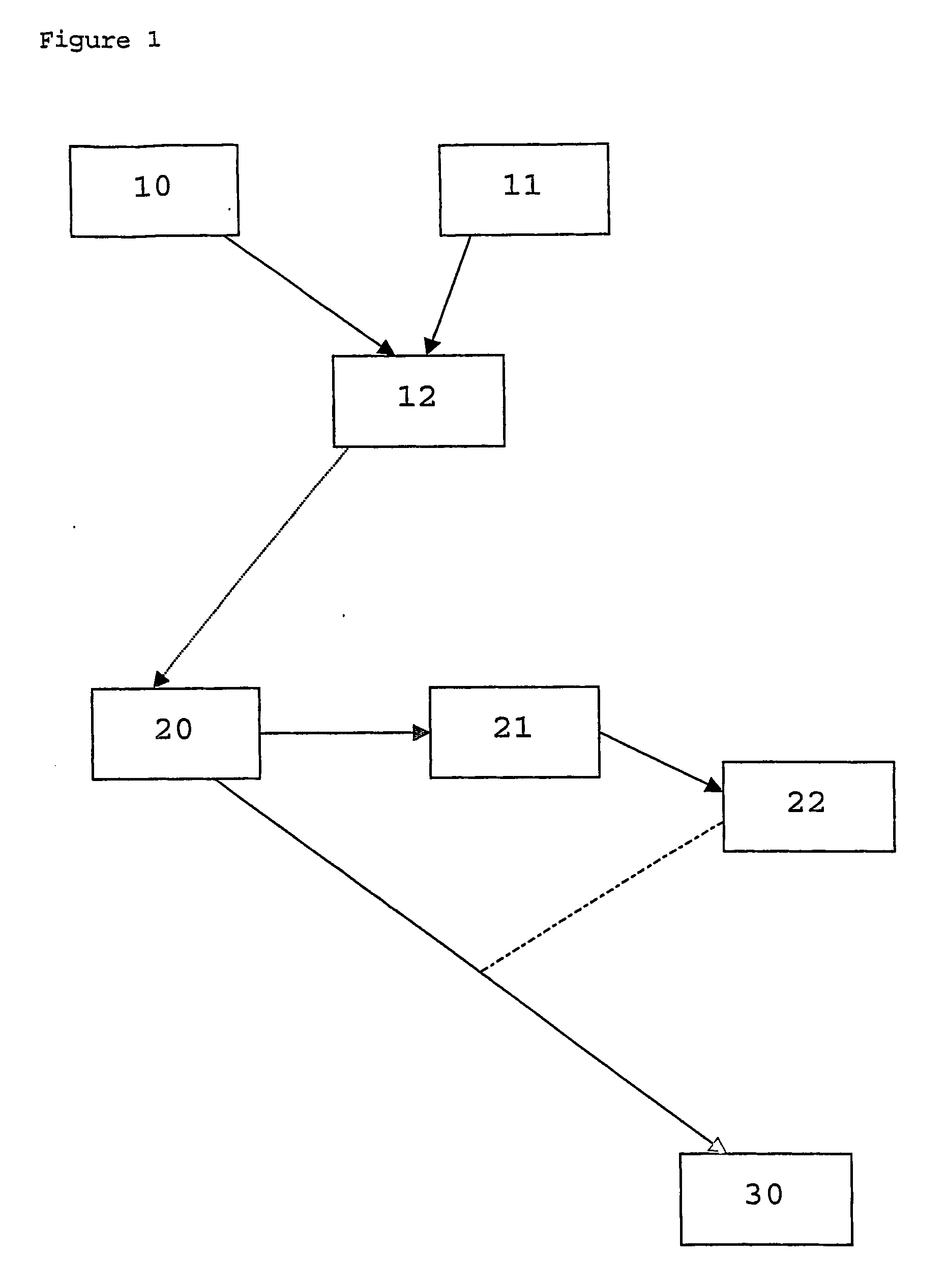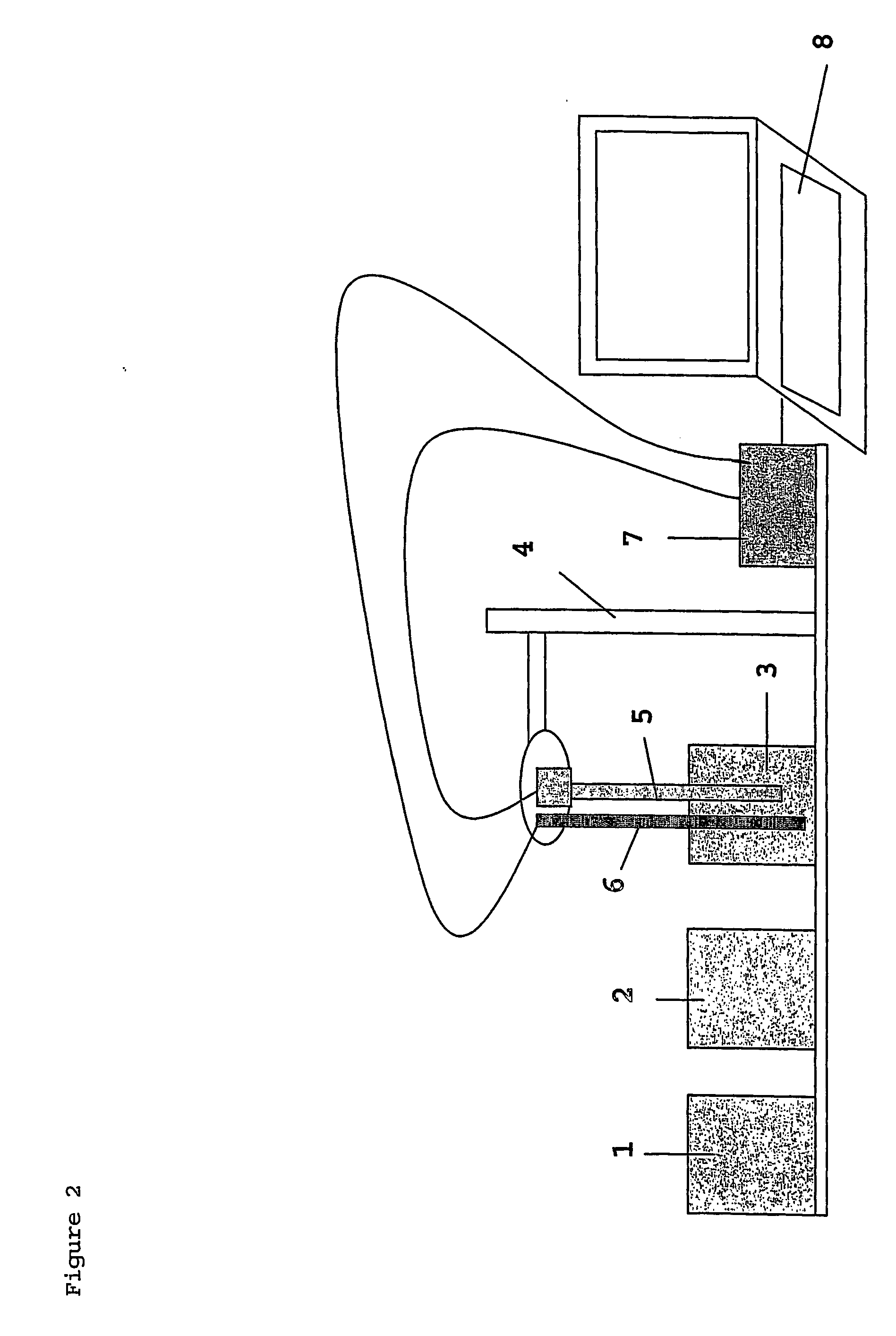Method of marking a product, marked product resulting thereof, and method of identifying same
a technology of product marking and product resulting, applied in the field of marking, can solve the problems of large state losses, consequences for public health, and the mere existence of packaging alone is no warranty by itself, and achieve the effect of precise laboratory analysis
- Summary
- Abstract
- Description
- Claims
- Application Information
AI Technical Summary
Benefits of technology
Problems solved by technology
Method used
Image
Examples
example 1
Marking of a Commercial Brandy with Fluoride Ions
[0114] The natural ionic content in Fluoride in the brandy to be marked was measured using a Fluoride Ion Selective Electrode and was determined to be below the detection limit (0.2 ppm) of the ISE sensor. Fluoride was consequently determined as being suitable for the marking of the commercial brandy.
[0115] A concentrated aqueous stock solution of the marking composition was prepared by dissolving 0.1% w / w of sodium fluoride in high purity distilled water. 0.5 g of the above stock solution was then added to 999.5 g of a commercial brandy to prepare a reference marked brandy having a fluoride concentration of 0.5 ppm.
[0116] To simulate criminal adulteration, the reference marked brandy was subsequently “diluted” with non marked brandy to various extend, making up brandies A to E as can be seen in Table 2.
[0117] Before starting the authentication measurements, the field detector was activated by dipping the fluoride ISE electrode (S...
example 2
Marking of a Commercial Whisky with Iodide Ions.
[0120] The natural ionic content in Iodide in the whisky to be marked was measured using a Iodide Ion Selective Electrode and was determined to be below the detection limit (0.06 ppm) of the ISE sensor. Iodide was consequently determined as being suitable for the marking of the commercial whisky.
[0121] A concentrated aqueous stock solution of the marking composition was prepared by dissolving 0.1% w / w of potassium iodide in high purity distilled water. 1.0 g of that stock solution was then added to 999.0 g of a commercial whisky to prepare a reference marked whisky having an iodide concentration of 1.0 ppm.
[0122] To simulate criminal adulteration, the reference marked whisky was subsequently “diluted” with non marked whisky to various extent, making up whiskies A to D as can be seen in Table 3.
[0123] Before starting the authentication measurements, the combination iodide ISE electrode (SENTEK Iodide directION) was activated by dipp...
example 3
Marking of a Commercial Perfume (Eau de Cologne) with Iodide Ions
[0127] The natural ionic content of Iodide in the perfume to be marked was measured using a Iodide Ion Selective Electrode and was determined to be below the detection limit (0.06 ppm) of the ISE sensor. Iodide was consequently determined as being suitable for the marking of the commercial perfume.
[0128] A concentrated aqueous stock solution of the marking composition was prepared by dissolving 0.1% w / w of potassium iodide in high purity distilled water. 5.0 g of that stock solution was then added to 995.0 g of a commercial perfume to prepare a reference marked eau de cologne having an iodide concentration of 5 ppm.
[0129] To simulate criminal adulteration, the reference marked perfume was subsequently “diluted” with non marked product to various extent, making up perfume A to D as can be seen in Table 4.
[0130] Before starting the authentication measurements, the combination iodide ISE electrode (SENTEK) was activat...
PUM
| Property | Measurement | Unit |
|---|---|---|
| concentration | aaaaa | aaaaa |
| atomic absorption spectroscopy | aaaaa | aaaaa |
| ion chromatography | aaaaa | aaaaa |
Abstract
Description
Claims
Application Information
 Login to View More
Login to View More - R&D
- Intellectual Property
- Life Sciences
- Materials
- Tech Scout
- Unparalleled Data Quality
- Higher Quality Content
- 60% Fewer Hallucinations
Browse by: Latest US Patents, China's latest patents, Technical Efficacy Thesaurus, Application Domain, Technology Topic, Popular Technical Reports.
© 2025 PatSnap. All rights reserved.Legal|Privacy policy|Modern Slavery Act Transparency Statement|Sitemap|About US| Contact US: help@patsnap.com


